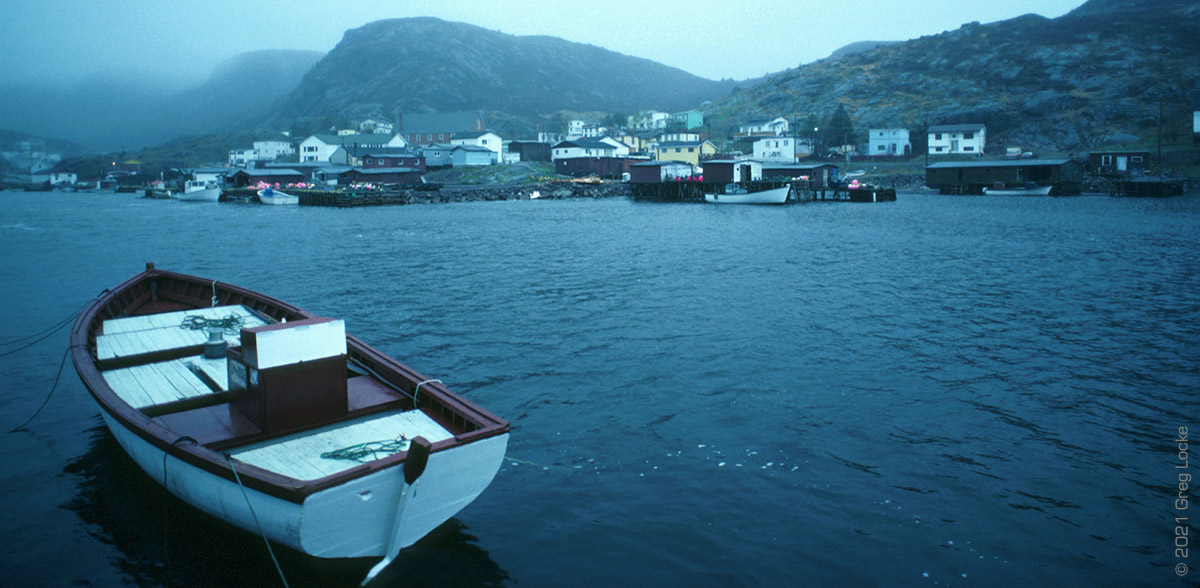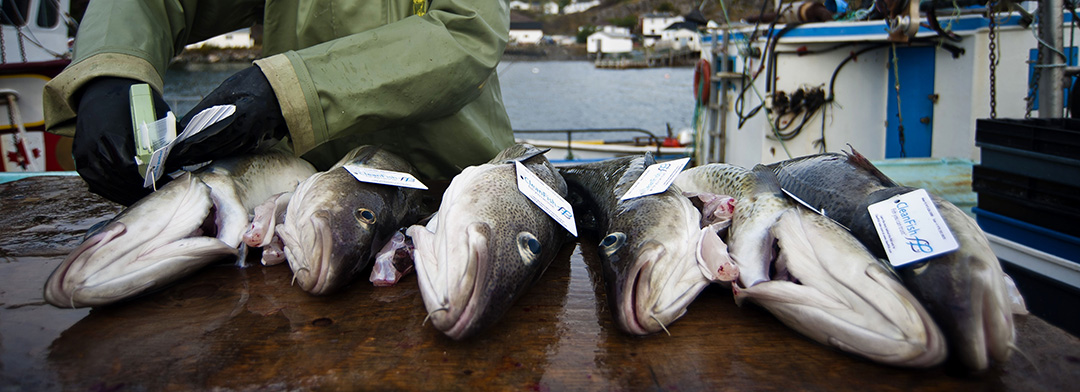A PETTY HARBOUR STORY
A tale of fish, politics and a sustainable economy

PETTY HARBOUR, N.L. (July 2012) – It’s a cold foggy day in the fishing village of Petty Harbour, Newfoundland. Just 20km south from downtown St. John’s it feels much further. There is not much activity or many people out and around the few remaining wharves and twine lofts. Once these places were buzzing hives of fishing activity that ringed the harbour. Today, it’s just a few frozen tourists looking to make photos of a Newfoundland that doesn’t exist anymore.

Twenty years ago I was here, too. It was a beautiful warm summer day and I was standing in this same spot on the breakwater with my cameras in hand. The harbour was filled with fishermen and their boats coming and going to the nearby fishing grounds. But there was no fish this day. Their boats were filled with cod traps and anchors being returned to their storage places to rust and rot.
The grim faces and tears of the people of Petty Harbour and other fishing communities around the province told the story of a great calamity.
The infamous cod moratorium imposed by the Canadian government was to come into effect on July 2, 1992 putting an end to the inshore cod fishery and a 500 year old economic activity that was the basis of Newfoundland culture and society.
It put an estimated thirty thousand people out of work and escalated the exodus of people from rural Newfoundland. It was the single largest layoff off of workers in Canadian history. Some social scientists say more than seventy thousand people have left the bays, coves and outports of the province.
A few nights before in a St. John’s hotel ballroom, iconic Newfoundland MP and cabinet minster, John Crosbie, delivered the news to reporters while angry fisherman pounded on locked doors trying to get into the room. Mr. Crosbie had to be escorted from the building by dozens of police officers. It was the closest the city has come to seeing a riot since 1932 when Prime Minister Sir Richard Squires ran for his life from protesters at the Colonial Building.
BEGINNING OF THE END
It’s not as if the fishermen didn’t see it coming. For years their catches were getting smaller. The fish were just not returning to the inshore waters in the spring after a long winter on the spawning grounds hundreds of kilometres out on the Grand Banks.
They told the politicians and scientists at the Department of Fisheries there were no fish. They were ignored and DFO continued to issue quotas, especially to corporations with the offshore factory freezer trawlers that fished year round. The scientists said fishermen didn’t know anything and politicians refused to lower catch quotas. Just last week, John Crosbie, now Lieutenant Governor, said in a retrospective interview with CBC that the scientist’s information wasn’t very good so the could not cut quotas based on the data.
When we talk about fishermen in Newfoundland it usually refers to the individuals and their families who caught fish in season from small 35 foot boats along the coast in cod traps and, at one time, jiggers and hand lines using passive fishing techniques.
In today’s environmental parlance it would be called a sustainable economic activity. It was not possible to over fish in the inshore fishery.

The traditional Newfoundland fishery was not the factory freezer trawlers of multinational fish companies that work 24/7, 365 days of the year dragging massive nets through the ocean vacuuming up every living creature and destroying the ocean floor making it uninhabitable.
It was these floating fish factories owned by Canadian, Spanish and Portuguese corporations (plus other EU countries) that fished the Northern Cod to the brink of extinction before moving on to do the same with other species in South America and West Africa.
This is why many Newfoundlanders are more than a little touchy when they hear people, especially their own politicians, say that Newfoundlanders over fished the cod stocks. It’s simply not true and just an exercise in diluting the blame. Unrestrained technology, international fishing and trade agreements and government officials are responsible for this ecological disaster and they need to wear it.
Ironically, the establishment of the 200 mile limit in 1977 by Canada did more to destroy the Newfoundland fishery than protect it. With the new 200 mile limit the Canadian government encouraged, licensed and financed fisherman and fish companies to build bigger boats and enterprises to exploit the new fishing zones. A 400 year old passive fishery became and active and aggressive hunting enterprise. They were encouraging over fishing.
Scientists estimate that the world’s total biomass of cod, tuna, and other large predatory fish has dropped 90 per cent since the industrialization of the fisheries in the 1950s.
TODAYS FISHERY
The fishery in Newfoundland today is still worth $1 billion but it does not employ the same people who were in the inshore cod fishery. It is primarily a shrimp and crab fishery prosecuted by multi-million dollar boats fishing in the mid-shore regions. It’s a different business than what most people think of when they hear the words Newfoundland fishery.
But even this industry is under the same pressures as the cod fishery with over capacity in the fleet and processing sectors and diminishing catches. Dozens of fish processing plants have closed this year alone.
Recent provincial governments appear to have washed their hands completely of the industry yet they are responsible for the processing sector. Fish is just not sexy when you are rolling in oil revenues and high tech mining and you don’t have to do deal with the socio-cultural implications and angry citizens.
THE FUTURE
There is a future for the fishery in Newfoundland if the province’s politicians, fish processors and unions choose to open their eyes to it. Fish is a renewable resource but you can’t catch more fish than are being reproduced.
A sustainable fishery is one that does not deplete the population or jeopardizes the environment. A sustainable fishery can protect the environment and provide some people with jobs, food, and government with indefinite revenues.
Fishermen run co-ops in Petty Harbour and Fogo Island were positive models even in the darkest days of the Newfoundland fishery. While the union, government and fish merchants squabbled, organizers saw a new way of doing business that side stepped the status quo and saw fishermen process their own fish and chose their own markets to sell to. It put management back in the hands of the fisherman, the ones who owned the fishing licenses and had the right to fish.
However, none of this reflects the current free market capitalist fashion of resource management that says greed is good and the faster and cheaper you can extinguish a resource and move on the better. In biological science that is the definition of a parasite.
Maybe the best fishermen can hope for is a total collapse of the global industry to the point where politicians, unions and companies are no longer interested and move on. Then they can organize again, pick up the pieces and go back to a local sustainable fishery. A fishery where those who chose to can live in a beautiful coastal fishing village and enjoy a livelihood that benefits us all.
Also see the photo gallery the Cod Moratorium Years.

